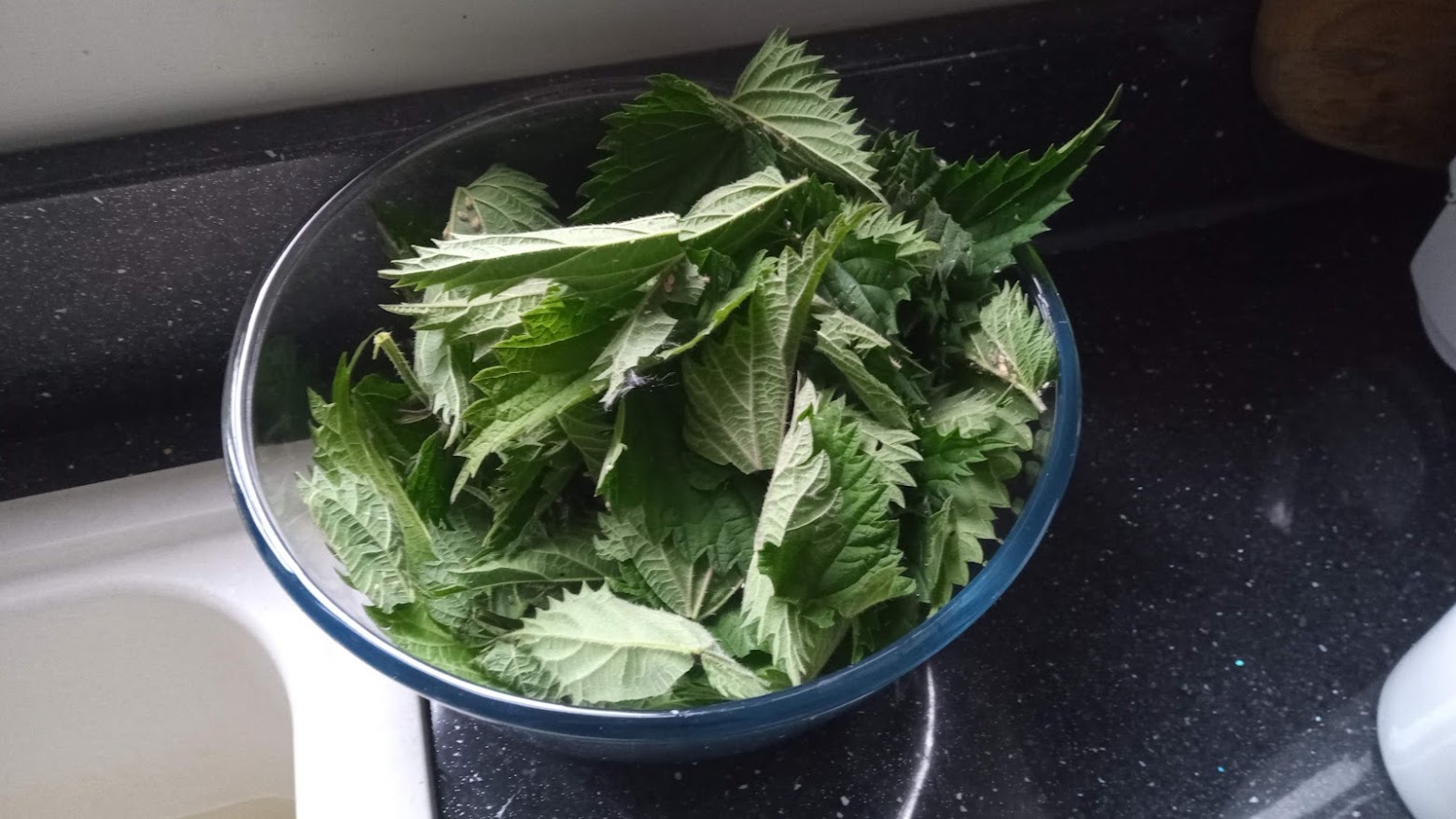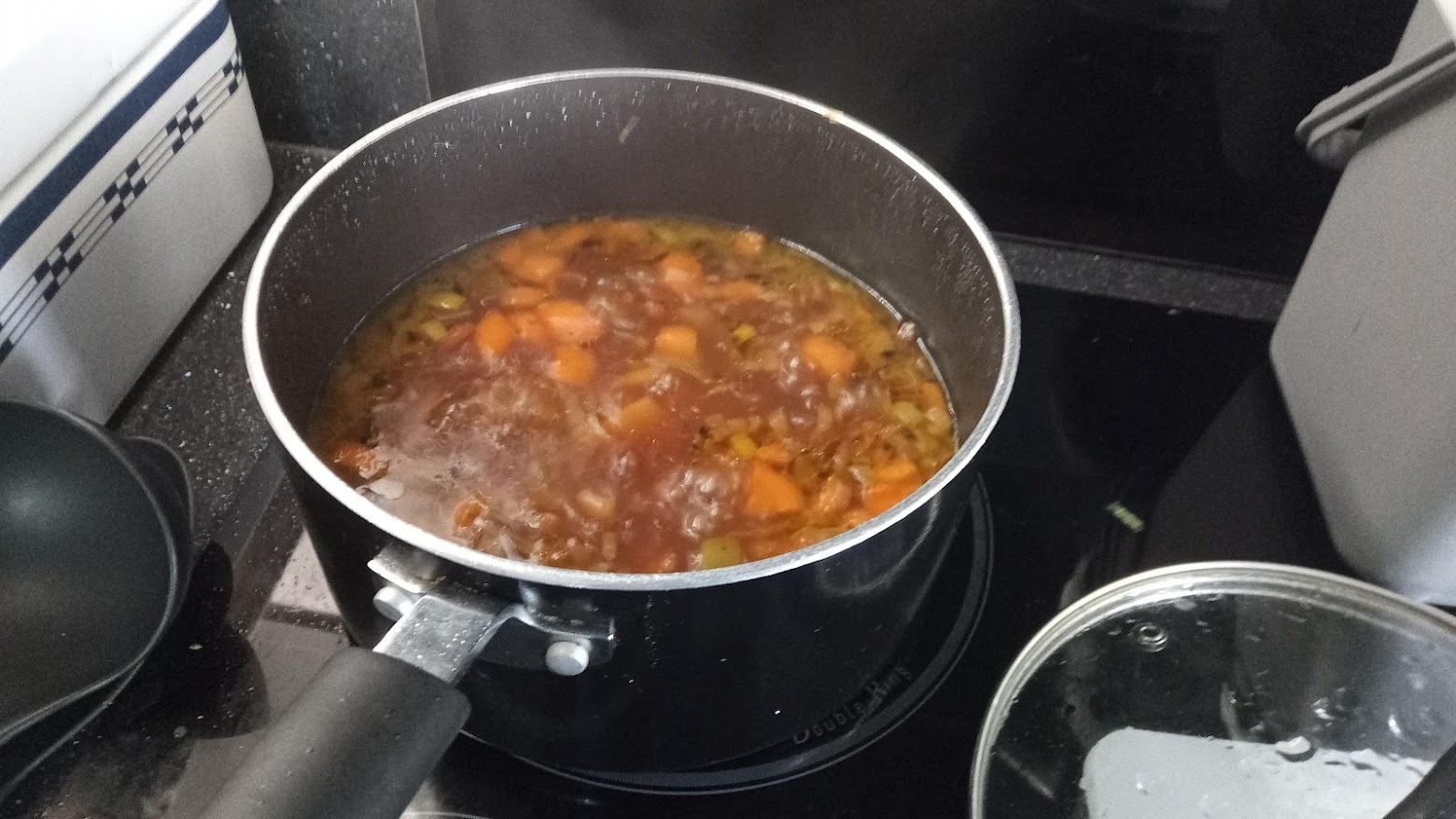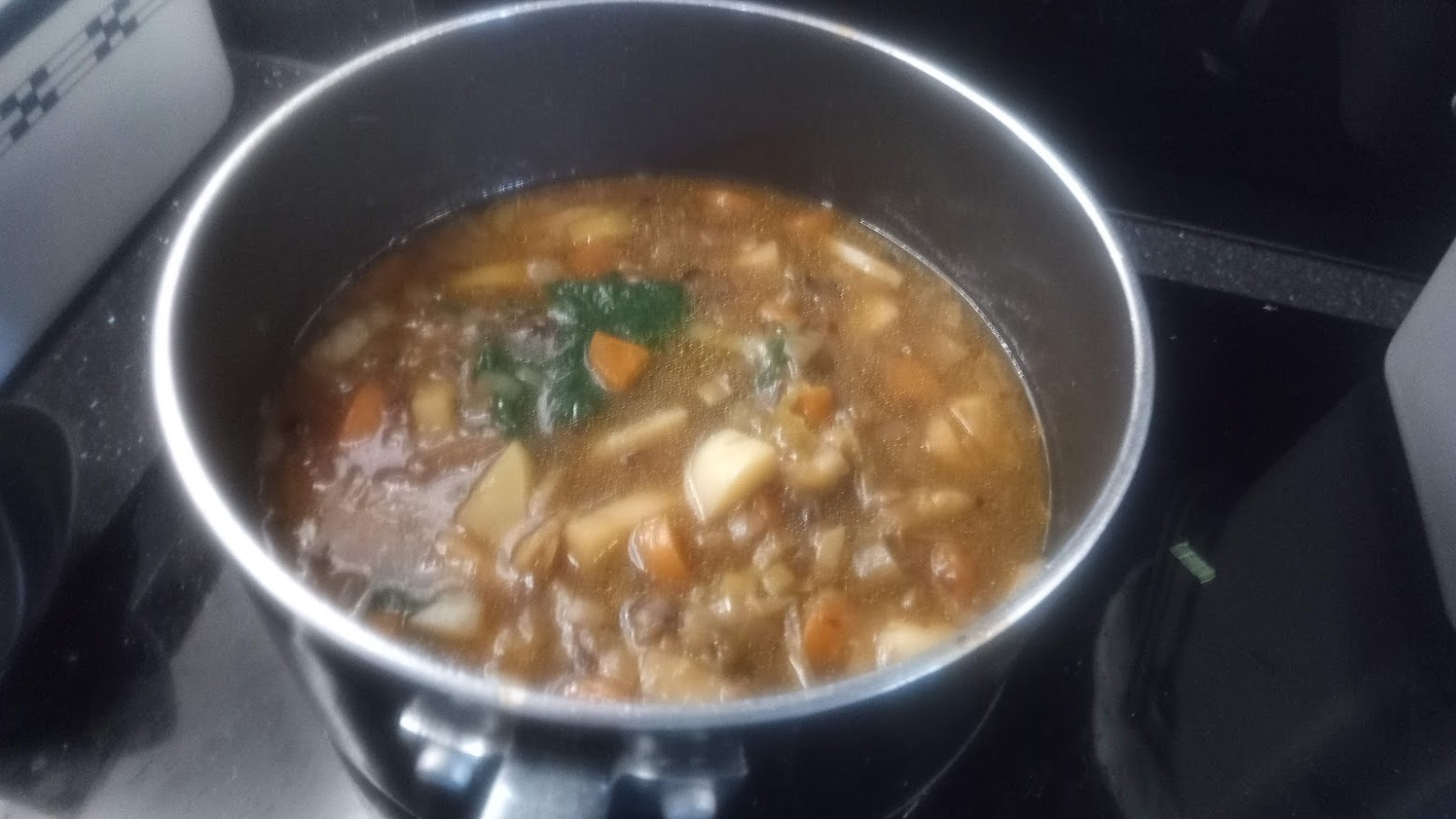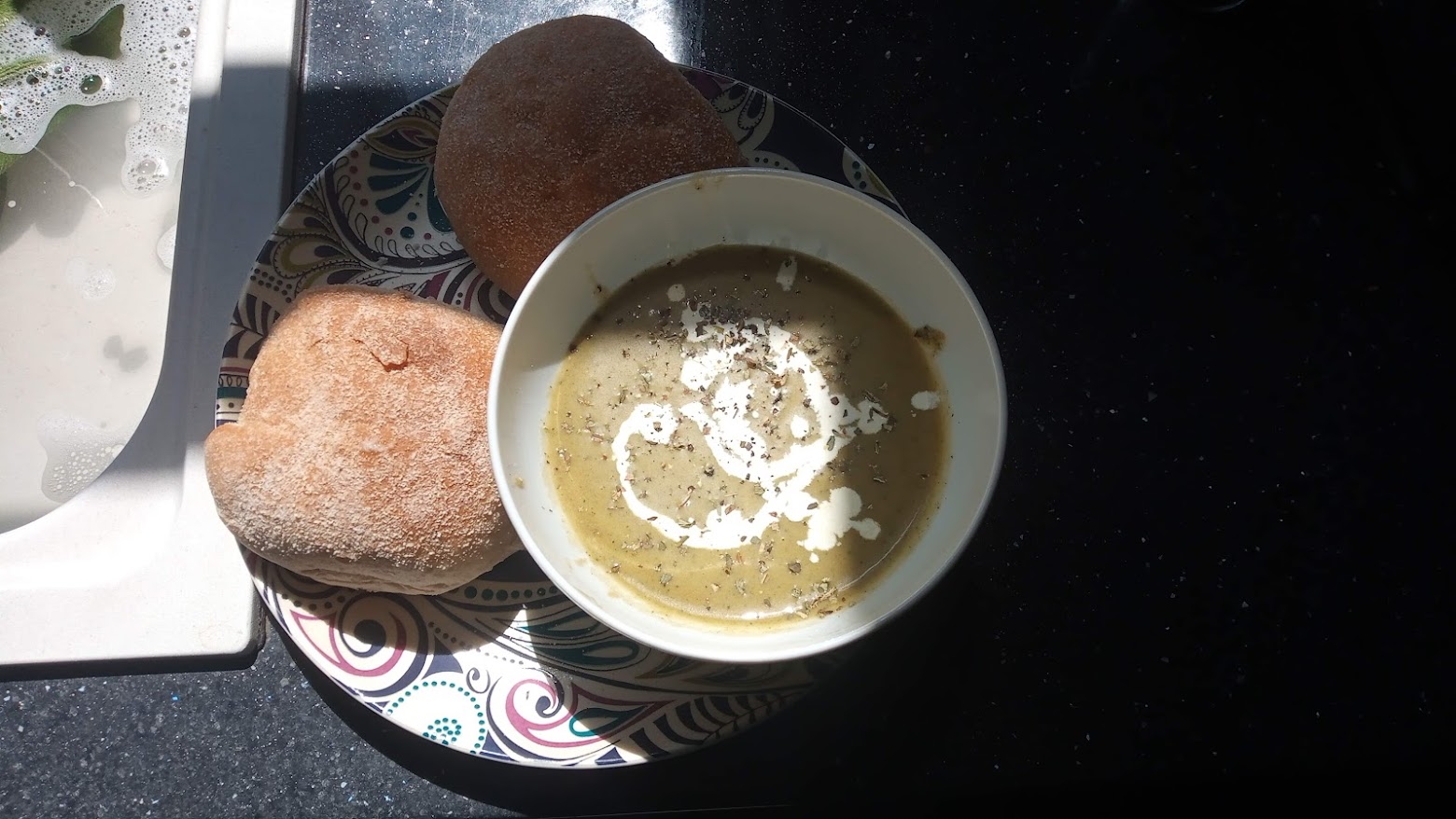Searching for Nettle Soup
5th June 2022

The other day I made nettle soup. I set out on a lazy Tuesday afternoon to the woods near my house, with the intent to find some stinging nettles. Of all the species to identify, Urtica dioica is definitely one of the safest. Unlike the similar cow parsley and hemlock, the stinging nettle has no doppelgangers that are poisonous. The stinging nettle itself is venomous, as many of you will know, but taking care with thick gloves when handling its histamine-laden leaves will save you any painful rash. The hairs that deliver their sting are designed in such a way as to stick into your skin if you brush against it, but you can grasp a raw nettle by pressing the leaf quickly and firmly between your two fingers to dislodge the needles. Nevertheless, these are deactivated during the first part of cooking.

Taking care to take the top four or so leaves off many plants so as to not kill one completely, I was left with the bounty above. However, many of these leaves had little seed-like protusions on them, that I figured were insect larvae or something caterpillar-related. I removed the leaves that had them, which left me with about half to use. A crucial next step is to blanch the nettles. This is done by boiling lightly salted water, placing the nettles in for 3–4 minutes until wilted, then shocking them in ice-cold water until ready to be added to the soup. This deactivates the stinging needles, and helps to bring out the flavour.
Onwards, then, I first made the soup's base. I thoroughly diced:
- 1 onion
- 1 carrot
- 1 leek
- 1 Maris Piper potato
I covered the base of the saucepan with a heaping of olive oil, then fried the diced onion until it was a golden-brown colour and smelled nice. I then put in the carrot, fried for a bit; then the leek and potato, and similarly fried for a bit. Once all the vegetables had softened and browned a little, making sure to vigorously stir the ingredients to not allow any burning, I mixed some shop-bought vegetable stock into boiled water, and poured it into the pan. I then left it to simmer until the broth tasted like, well, soup. Up until now, this could be the base for any soup, and was an orange-like colour. However, now it is time for the nettles.


I added the nettles to the pan and stirred them in with the spatula. I held them there for ~5 minutes, until they had wilted sufficiently. Then, I poured the contents of the pan into the blender, and thoroughly blended the whole lot. Once blended into a fine soup, the broth takes on a strong green colour, similar to pea soup. Once blended, I added 50ml of double cream, and blended again to mix the cream into the soup. Then, we are ready to serve. I recommend black pepper, basil and a pinch of oregano. I also swirled some more double cream on top of the soup, as seen here.

I recommend serving with crusty bread for dipping. The taste of nettles as a whole is of a slightly stronger spinach. The advantage is, of course, that they grow in any free bit of land in Britain, no matter the conditions, and in abundant quantity too. If you ever find yourself needing to remove nettles from your garden, I recommend getting some use out of them and cooking them like I did.
